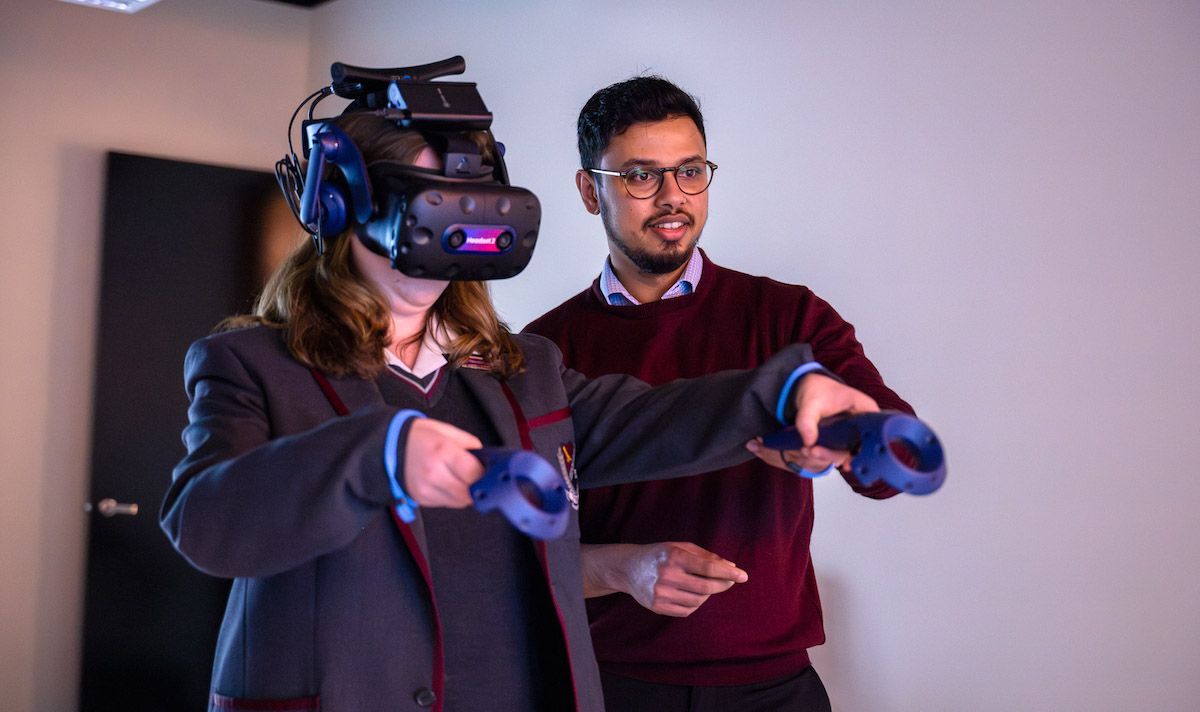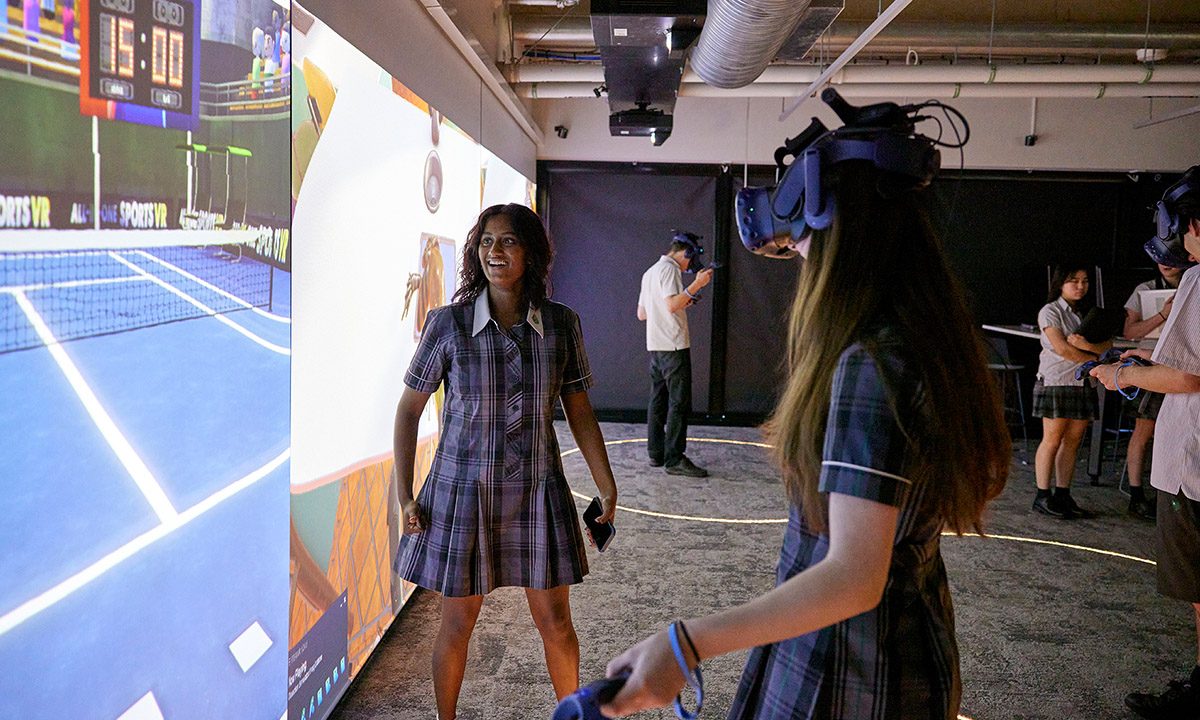Author: Lumination
Date: 16th Feb 2023
AR and VR are changing our workspaces — Here’s how
How are traditional workplaces changing with the use of immersive technologies? What does the future hold for augmented reality (AR) and virtual reality (VR) at work?
Let’s take a look at these examples of VR in the workplace to see how immersive technology is disrupting our workspaces, changing the way we work for good.
Delivering On-the-Job Training
Personnel need to be able to learn in an effective environment — one that mimics the realities of work as accurately as possible. Of course, safety is paramount here. Employees need to gain the necessary training and education to work safely out in the field. Traditionally, this means compromise. Trainees gain knowledge from textbooks or learning materials, and then are exposed to a managed level of risk as they apply this knowledge on the job.
With AR and VR in the workplace, this is not the case. Employees have the opportunity to grow their practical skills and develop their confidence in a wholly safe, virtual environment. Just like an airline pilot will log hundreds of hours on a flight simulator, personnel in all industries can achieve a profound understanding of how to work safely and effectively.
This is an area that the Lumination team knows well. Working closely with researchers from the University of South Australia, we created a training simulation focused on replicating a humanitarian mission. Built into this simulation are a series of scenarios that give users direct experience of how a situation might unfold in real life, harnessing the power of AI to maintain a realistic flow of cause and effect.
This is a prime example of how realism can be introduced to training, giving individuals and teams safe access to high-pressure, high-risk situations. The technology can be extended to cover all types of scenarios, from those relevant to the mining industry to other practical-led sectors.
Redefining the Office Environment
During the pandemic, the traditional office environment found itself on the frontline of debate and conjecture. With offices across Australia — and across the world — closing their doors, businesses suddenly had to find a different approach, accelerating moves towards a more fluid, remote set of operations. Even now, as we hopefully move beyond the pandemic phase, businesses are looking towards a more hybrid working model in the future.
Virtual reality and immersive technologies are valuable here. Businesses can harness VR applications like standalone VR headset devices, as well as desktop headsets that plug into in-office computers. At the same time, mobile smartphones support VR headset connections across different workspaces, meaning that everyone can connect with the immersive digital experience.
This is going to play a huge role in the office of the future, bringing together in-house and remote personnel for meetings or sharing highly detailed, highly engaging presentations in a 3D immersive environment.
Expanding the Capabilities of Remote Work
Not all Australians are office workers. While the percentage of workers in the agriculture, forestry, and fishing industry fell from 5.6% in 2000 to 3.2% in 2020, this is still a significant number of workers. It’s a similar case with manufacturing, which constituted 6.6% of the workforce in 2020, up from 6.5% in 2019 but down from 11.5% in 2000. Other industries, such as mining, have in fact grown — mining represented 1.4% of the labour force in 2020, up from 0.8% in 2000.
Where does VR fit into these hands-on industries that exist outside of the ‘work from home’ scope? Increasingly, it is possible to use virtual and augmented reality technology to create the precise images and plans required for engineering purposes.
Personnel can interact with these images via their own VR/AR technology, enabling remote teams to learn more about the environment and to query or work collaboratively on key elements within the image. This is going to be an important part of engineering, construction, and other disciplines in the future.
We can also expect to see VR in the workplace through personnel operating mechanical arms and other physical tech from a remote location. Surgeons are already using VR technology to conduct medical procedures by operating robotic systems remotely, achieving higher levels of precision, accuracy, and reliability than if they were working directly. This technology can be used across the mining, manufacturing, construction, and engineering industries, helping personnel reach places that may be unsafe or unfeasible for them to go to themselves.
Building Collaborative Spaces
By 2030, PwC expects that around 23.5 million jobs will be relying on AR and VR for training, work meetings, or to provide better customer service. This adds another facet of VR applications to be considered.
Customer service VR interacts with the end user, not with employees. So, employees will need to be able to work alongside this VR environment, monitoring and maintaining this VR system, while also delivering human customer service to augment the system’s capabilities. This necessitates high levels of training and education in VR and AR technologies for the workforce of tomorrow.
Enhancing Vital Human Skills in Industry
Training doesn’t necessarily involve learning the nuts and bolts of how to do a job. Instead, it may involve gaining insight into how to work effectively with other members of staff.
Inclusive VR technologies already exist, helping users to see things from the point of view of another. It is hoped that this empathy training can help to foster more inclusive, more understanding environments in the future. In fact, this has been one of the core focuses of Lumination, developing technologies that support students with specific learning needs, as well as technologies that elicit empathy and understanding between users of all backgrounds.
Lumination and the Workplace of Tomorrow
Here at Lumination, we build immersive technology for a variety of applications and use cases. With a focus on education and training, we are helping to power the labour force of tomorrow, providing them with the skills and capabilities they need to thrive in the jobs market.
With products like our Lumination Learning Labs and XR-Simulation, we are working to change the way workers, students and learners experience education and vocational training. Helping to power the need’s of today’s labour force, we are providing employees with the skills and capabilities they need to thrive in the jobs market.
Sign up for our newsletter and join us on this journey, or learn more as you explore our insights and resources.



